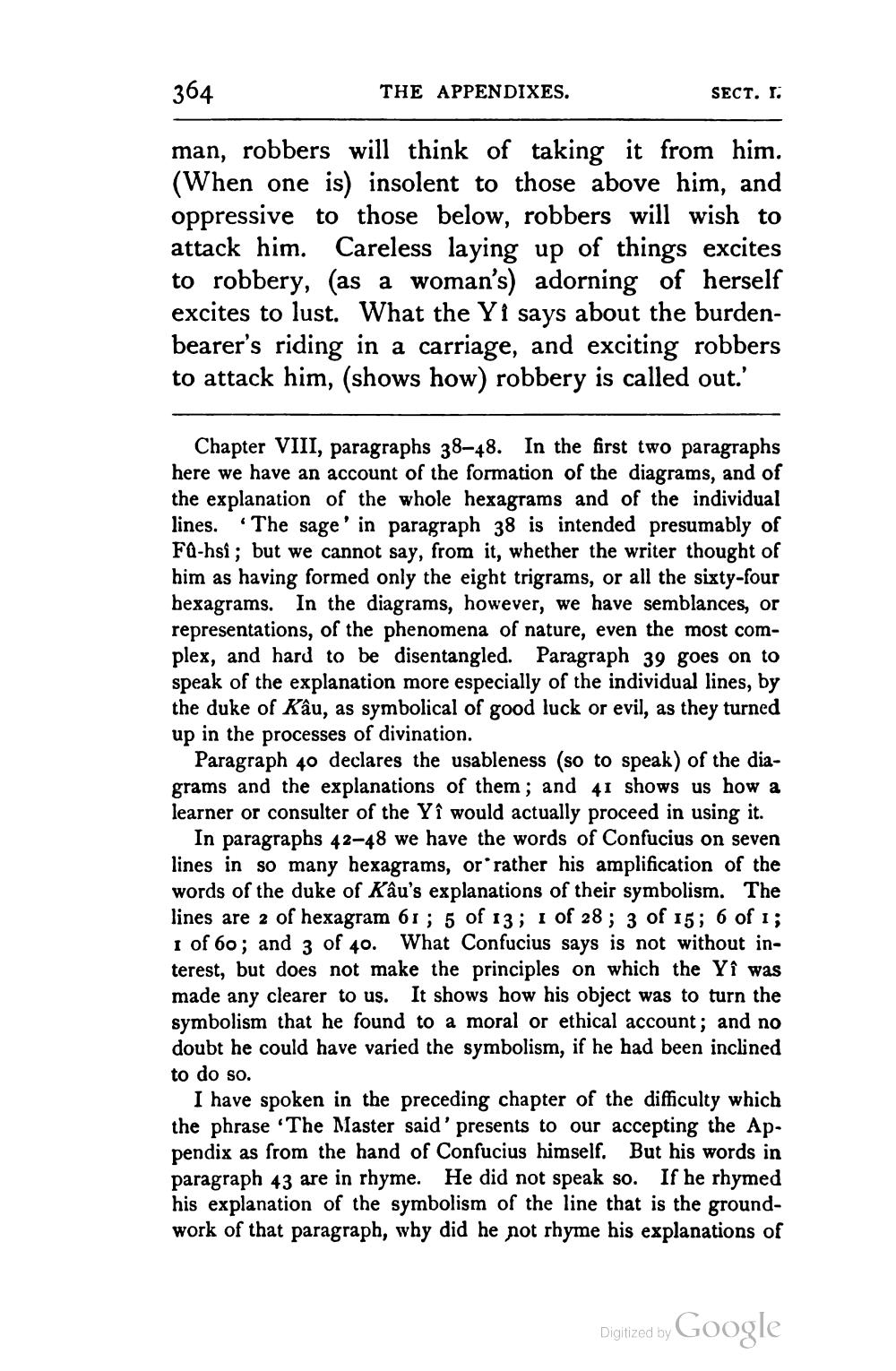________________
364
THE APPENDIXES.
SECT. I.
man, robbers will think of taking it from him. (When one is) insolent to those above him, and oppressive to those below, robbers will wish to attack him. Careless laying up of things excites to robbery, (as a woman's) adorning of herself excites to lust. What the Yi says about the burdenbearer's riding in a carriage, and exciting robbers to attack him, (shows how) robbery is called out.'
Chapter VIII, paragraphs 38–48. In the first two paragraphs here we have an account of the formation of the diagrams, and of the explanation of the whole hexagrams and of the individual lines. The sage' in paragraph 38 is intended presumably of Fa-hsî; but we cannot say, from it, whether the writer thought of him as having formed only the eight trigrams, or all the sixty-four hexagrams. In the diagrams, however, we have semblances, or representations, of the phenomena of nature, even the most complex, and hard to be disentangled. Paragraph 39 goes on to speak of the explanation more especially of the individual lines, by the duke of Kâu, as symbolical of good luck or evil, as they turned up in the processes of divination.
Paragraph 40 declares the usableness (so to speak) of the diagrams and the explanations of them; and 41 shows us how a learner or consulter of the Yi would actually proceed in using it.
In paragraphs 42-48 we have the words of Confucius on seven lines in so many hexagrams, or rather his amplification of the words of the duke of K'âu's explanations of their symbolism. The lines are 2 of hexagram 61; 5 of 13; 1 of 28; 3 of 15; 6 of 1; I of 60; and 3 of 40. What Confucius says is not without interest, but does not make the principles on which the Yî was made any clearer to us. It shows how his object was to turn the symbolism that he found to a moral or ethical account; and no doubt he could have varied the symbolism, if he had been inclined to do so.
I have spoken in the preceding chapter of the difficulty which the phrase "The Master said' presents to our accepting the Ap. pendix as from the hand of Confucius himself. But his words in paragraph 43 are in rhyme. He did not speak so. If he rhymed his explanation of the symbolism of the line that is the groundwork of that paragraph, why did he not rhyme his explanations of
Digitized by Google




